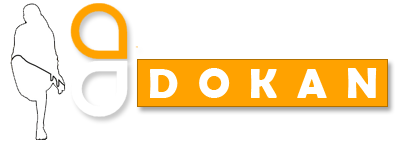- Your cart is empty
- Continue Shopping
Blockchain payments to transform cross-border transactions
Content
The transaction is complete – it has been witnessed by thousands of independent https://www.xcritical.com/ nodes globally and is publicly verifiable. In Canada, when virtual currency is used for salary or wages, it is generally considered part of the employee’s income in Canadian dollars. Virtual currencies, classified as commodities, follow barter transaction rules when used to buy goods or services. You can either carry out the execution yourself or hire a blockchain development company to help you out with the technicalities. After defining your project scope, the next step you take is to determine your front-end technology stack.

steps on how to integrate blockchain in payments
The Topper payment widget is built to simplify the payment process, accept more currencies and deliver higher approval rates. NOWPayments.io is a crypto payment gateway allowing all kinds of eCommerce to accept blockchain payments crypto as a payment or donation globally. Traditional systems rely on centralized record-keeping, making them susceptible to fraudulent activities where counterfeiting and unauthorized transactions can occur if security measures are compromised.
- Residents in the Single Euro Payments Area (SEPA), as well as European Union nations, can transfer euros or other national currencies into their digital wallets on Abra.
- This project was largely responsible for introducing blockchain into our everyday vernacular, and wasn’t rivaled until 2015, with the launch of the Ethereum platform.
- It boasts advantages like faster settlements, enhanced security, and potentially lower fees.
- Wegner[151] stated that “interoperability is the ability of two or more software components to cooperate despite differences in language, interface, and execution platform”.
- In addition to reducing human error, their function is to facilitate decentralization and create a trustless environment by replacing third-party intermediaries.
- They play a role in linking blocks together, as new blocks are generated from the previous block’s hash code, thus creating a chronological sequence, as well as tamper proofing.
- This way, individuals can stay connected while monitoring who can view their personal information.
Cool Augmented Reality Examples To Know About
By leveraging the underlying blockchain technology in our solutions, we List of cryptocurrencies allow users to their financial transactions in a transparent and trustless manner with no intermediaries. Despite their significance, micropayments’ potential is often curtailed by high transaction fees and delayed processing in traditional systems. Luckily, blockchain technology presents a major upgrade by eliminating intermediaries and their subsequent fees.

Top 8 use cases of blockchain in payments
U.S. users are able to move their cryptocurrency between PayPal’s platform and external crypto wallets and exchanges, as well as send and transfer their currency to other Paypal users. PayPal also doesn’t charge fees for transferring cryptocurrency onto or within the platform, and allows checkout with crypto at millions of merchant locations. After deciding your front-end technology stack, you must choose a blockchain network platform. There are many blockchain network platforms with great benefits that you can use to implement the blockchain payments system in your business.
Smart contracts are self-executing agreements that automatically trigger transactions when predefined conditions are met. This technology streamlines payment processes, reduces administrative costs, and ensures that payments are executed securely and efficiently. Overall, blockchain technology is transforming the way we conduct transactions by providing a secure, transparent, and efficient platform.
In payments, smart contracts can automate tasks like releasing funds upon receiving proof of delivery, eliminating the need for manual verification and speeding up the entire process. Imagine a shared record book, visible to everyone, where each entry (transaction) is cryptographically linked to the one before it, creating an unalterable chain. This eliminates the need for you to hold onto receipts – the blockchain stores everything securely, fostering trust in the system. Depending on the network used, the public address either stays the same (in the case of Ethereum), or changes for each transaction (in the case of Bitcoin). In addition, each transaction receives a unique transaction hash that serves as a proof that a transaction was validated and added to the blockchain.
This way, individuals can stay connected while monitoring who can view their personal information. Grayscale Investments serves individuals and institutions with a range of investment options, including opportunities to reap the economic rewards of blockchains. Among its collection of single assets, the firm allows clients to invest in funds covering Bitcoin, Decentraland and Ethereum. As a result, investors can branch out from traditional funding routes to explore the latest developments in the digital economy. Robinhood is one of the largest online trading platforms allowing investors to buy, sell and trade cryptocurrencies.
It is a digital ledger of transactions and provides an open database of every transaction involving value. A private blockchain is permissioned.[53] One cannot join it unless invited by the network administrators. To distinguish between open blockchains and other peer-to-peer decentralized database applications that are not open ad-hoc compute clusters, the terminology Distributed Ledger (DLT) is normally used for private blockchains. As part of its collaborative approach to innovation, Mastercard is exploring future use cases to scale new solutions with startups around the world.
Blockchain can revolutionize the remittance industry by providing faster, cheaper, and more secure cross-border transactions. By eliminating the need for intermediaries and reducing fees, blockchain-based remittance platforms can enable immigrants and foreign workers to send money to their families in a more cost-effective and efficient manner. Blockchain is a decentralized and distributed ledger technology that allows for transparent and secure transactions. It operates on a peer-to-peer network where every participant, or node, has a copy of the entire ledger. This eliminates the need for a central authority to verify and authorize transactions.
Each transaction is bundled into a block and linked to previous blocks, creating a chain of information. This decentralized structure eliminates the need for a central authority and provides inherent security through cryptography. This project was largely responsible for introducing blockchain into our everyday vernacular, and wasn’t rivaled until 2015, with the launch of the Ethereum platform. Aside from saving paper, blockchain enables reliable cross-team communication, reduces bottlenecks and errors while streamlining overall operations. By eliminating intermediaries and automating verification processes — done via smart contracts — blockchain enjoys reduced transaction costs, timely processing times and optimized data integrity.
Practical applications span various industries, including digital payments, supply chain management, remittances, and micropayments. These systems ensure transaction integrity and confidentiality, providing advantages such as increased security, enhanced transparency, reduced transaction costs, and improved efficiency. The information and services provided are not intended for, and should not be accessed or used by, residents of the United Kingdom.
On top of this, blockchain employs advanced cryptography to enhance transaction security. Each transaction is encrypted using intricate algorithms, making them next to impossible to decipher without the correct keys. They can also use blockchain-powered loyalty programs, which allows for innovative functions like exchanging tokens with other users or converting them into different rewards. Below, we’ll delve into the eight most notable use cases of blockchain in payments. At Idea Usher, we were excited to collaborate with a client on MOGO, a groundbreaking music platform built on blockchain technology.
Using blockchain, lenders can verify the authenticity of invoices and track the movement of goods throughout the supply chain. This enables faster and more secure financing for suppliers, reducing the risk of fraud and improving cash flow. Every node has its own copy of the blockchain and the network must algorithmically approve any newly mined block for the chain to be updated, trusted and verified. Since blockchains are transparent, every action in the ledger can be easily checked and viewed, creating inherent blockchain security.
As the technology continues to evolve and gain wider adoption, it is expected to unlock more innovative solutions and transform various aspects of the payments industry. Each transaction is encrypted and linked to its previous block, making it computationally impractical to alter or tamper with the data. Additionally, public and private key cryptography is used to authenticate transactions and ensure that only authorized parties can access and modify the data. Overall, the potential use cases of blockchain in payments are vast and continue to evolve. From remittances and peer-to-peer payments to supply chain financing and micropayments, blockchain technology has the potential to reshape the way we transact and interact financially. Public blockchains are permissionless networks considered to be “fully decentralized.” No one organization or individual controls the distributed ledger, and its users can remain anonymous.
There’s a lot going on behind the scenes in the Bitcoin network, so here’s a detailed primer designed to help you further your understanding of this digital phenomenon. Now let us go a little bit further and understand how a payment will be processed via Blockchain and how it will be different to the traditional approach. In this step we will also try to shed some light on the term “Distributed Ledger”.
